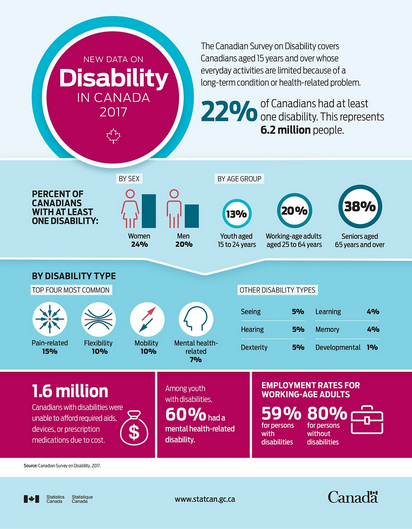The ineffectiveness of Trudeau's COVID-19 disability plan is the product of a sytsem that has, for decades, failed to provide for and protect some of our most vulnerable citizens.
By Stewart Klazinga
Published June 12, 2020
Prime Minister Justin Trudeau's pandemic relief plan for Canadians with disabilities is essentially an empty gesture. It looks good on camera, but on paper its inadequacies are glaring; all because it is being distributed through the Disability Tax Credit (DTC).
According to the Government of Canada:
The DTC is a non-refundable tax credit that helps persons with disabilities or their supporting persons reduce the amount of income tax they may have to pay. An individual may claim the disability amount once they are eligible for the DTC. This amount includes a supplement for persons under 18 years of age at the end of the year.
You are eligible for the DTC only if we approve Form T2201, Disability Tax Credit Certificate. A medical practitioner has to fill out and certify that you have a severe and prolonged impairment and must describe its effects. Answer a few questions to find out if the person with the disability may be eligible.
To be eligible, a person must meet at least one of the following criteria: blind, "markedly restricted" in at least one daily living activitie, "significantly restricted" in at least two daily living activities, or or "in need of life-sustaining therapy"; and the impairment must last at least 12 month and be consistently present.
In 2019, Canadians who qualified for the DTC could claim up to $8,416 on their return.
Only about 20 percent of Canadians living with disabilities receive the DTC. This means about 80 percent of Canadians living with disabilities will not have access to these funds.
According to Stats Canada, in 2017, 6.2 million Canadians over the age of 15 lived with one or more disabilities.
According to the 2019 Report on Federal Expenditures, in 2015 only 1.2 million Canadians claimed the DTC, either for themselves or for an eligible family member. The most recent data for 2018 [PDF] says 1.3 million Canadians claimed the benefit; not a significant increase over three years.
This means that, at a minimum, approximately 80 percent of Canadians living with disabilities did not claim the DTC or have it claimed by someone else on their behalf.

Infographic: Disability in Canada
There are several possible factors to consider when discussing the DTC's low enrollment.
In May, 2019 a 12-person committee released a report titled Enabling Access to Disability Tax Measures [PDF]. The report states that too many Canadians living with disabilities don't qualify for the DTC because the criteria are either too strict or too vague. The report focused on the DTC and offered 42 recommendations.
Many Canadians living with disabilities or their families may not even be aware of the DTC. Additionally, one's status with any province's social assistance program for people living with disabilities has no bearing on one's eligibility for DTC.
Applying for the DTC is a bureaucratic nightmare. The numerous hoops to jump through and red tape to cut put applying firmly out of reach of almost any layperson's ability to do by themselves. This means professional help is needed, and more often than not, professional help is not free.
As shown above, the 2017 Canadian Survey on Disability already determined that at least 1.6 million Canadians living with disabilities were unable to afford required medical aids, devices, or medication due to cost.
Any additional costs that may be required to apply for the DTC makes the process prohibitive for many Canadians living with disabilities, especially since being approved is far from a sure thing; essentially a gamble.
The 2017 Canadian Survey on Disability also determined that employment rates for working-age Canadians living with disabilities is 20 percent lower than the national average. Considering COVID-19's effect on the nation's employment landscape who knows what that number looks like presently.
Considering the likely employment rate changes due to COVID-19, the 1.6 million Canadians living with disabilities who are unable to afford their medical necessities may be much higher.
Leaving aside the possibility that Trudeau's plan was implemented this way intentionally, for all the reasons above, the ineffectiveness of this plan can also be viewed as the product of a system that has, for decades, failed to adequately provide for and protect some of our most vulnerable citizens.
We have failed Canadians living with disabilities at every level.
Bureaucratic obstacle courses. For-profit providers. Stagnant rates. Lack of a truly universal healthcare system.
We need a robust, equitable, national assistance program for Canadians living with disabilities. We need to ensure all Canadians get the medical resources they need. We need to ensure that all Canadians have adequate shelter, security and comfort. We need to do better.
You must be logged in to comment.
There are no upcoming events right now.
Why not post one?